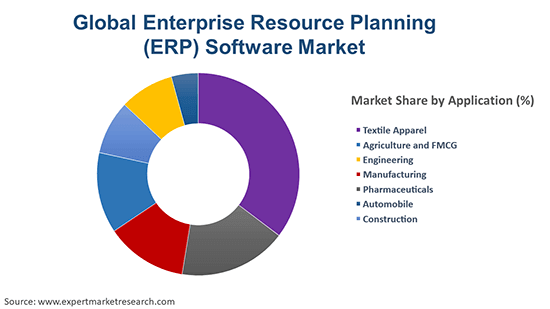Introduction In today’s fast-moving business world, communication and collaboration are key to success. Companies are now turning to Enterprise Social Software (ESS) to improve teamwork, share knowledge, and stay connected. From small teams to large organizations, ESS tools have become essential in boosting productivity and simplifying how employees work together. This article explores the size
Introduction
In today’s fast-moving business world, communication and collaboration are key to success. Companies are now turning to Enterprise Social Software (ESS) to improve teamwork, share knowledge, and stay connected. From small teams to large organizations, ESS tools have become essential in boosting productivity and simplifying how employees work together.
This article explores the size and share of the global ESS market, the reasons behind its growth, industry trends, and what the future looks like for this powerful software category.
What is Enterprise Social Software (ESS)?
Enterprise Social Software (ESS) refers to digital tools designed to help employees within an organization connect, communicate, and collaborate. These tools often include features like messaging, file sharing, team discussion boards, activity feeds, and integration with other business software.
Unlike public social media, ESS platforms are secure and designed for internal use, making them ideal for enhancing workplace efficiency and team collaboration.
Some well-known ESS platforms include:
- Microsoft Teams
- Slack
- Yammer
- Workplace by Meta
- Zoho Connect
Market Size Overview
The global ESS market has experienced steady growth over the past decade. In 2024, the market was valued at several billion dollars and is expected to continue growing over the next few years. Analysts predict strong growth fueled by the rise of remote work, digital transformation, and cloud computing.
North America holds the largest market share due to early adoption and widespread use of cloud-based tools. However, Asia-Pacific and Europe are growing fast as more companies embrace hybrid and remote work setups.
Key Factors Driving Market Growth
Several key factors are pushing the ESS market forward:
- Remote and Hybrid Work
With more people working from home or in flexible environments, businesses need tools that allow easy communication and real-time collaboration. - Digital Transformation
Companies are investing in technology to improve operations, and ESS tools play a big part in this shift. - Employee Engagement
Organizations are realizing that social tools help employees feel more connected, leading to better engagement and satisfaction. - Cloud Technology
Cloud-based ESS tools are easy to set up, scale, and maintain, making them attractive to businesses of all sizes. - Mobile Access
As more employees work on-the-go, having access to collaboration tools through mobile apps has become a necessity.
Market Segmentation
The global ESS market can be divided into several segments:
- By Component
- Software
- Services (consulting, support, training)
- By Deployment Type
- Cloud-based
- On-premise
- By Organization Size
- Small and Medium Enterprises (SMEs)
- Large Enterprises
- By Industry
- IT and Telecom
- Healthcare
- Retail
- Education
- Manufacturing
- Government
Each segment contributes differently to the overall market based on business needs, budget, and technological readiness.
Key Benefits of Enterprise Social Software
Using ESS provides a wide range of benefits:
- Improved Communication
Teams can chat, video call, or share ideas quickly across departments. - Centralized Information
ESS tools keep all conversations, files, and updates in one place. - Knowledge Sharing
Employees can post questions, share tips, or update others through internal forums or feeds. - Stronger Team Collaboration
Cross-functional teams can work together easily regardless of their location. - Faster Decision-Making
Real-time updates and discussions help speed up the decision process.
Emerging Trends in ESS
As technology evolves, new trends are shaping the future of ESS:
- AI-Powered Tools
Artificial intelligence helps automate routine tasks, suggest content, or summarize discussions. - Integration with Other Platforms
ESS tools are being connected with project management, CRM, and HR software for better workflow. - Enhanced Security
Data protection and compliance are now top priorities for ESS providers, especially in industries like healthcare and finance. - Personalized Workspaces
ESS tools now offer personalized dashboards and feeds, tailored to each user’s role. - Focus on Analytics
Companies are using analytics within ESS to track engagement and improve communication strategies.
Regional Insights
- North America
Strongest market due to high tech adoption and mature enterprise software industry. - Europe
Growing steadily, especially in countries like Germany, France, and the UK. - Asia-Pacific
Fastest-growing region with rising demand in China, India, and Southeast Asia. - Latin America and Middle East
Adoption is rising, but slower compared to other regions due to budget and infrastructure limitations.
Challenges in the ESS Market
While the market shows strong potential, it’s not without challenges:
- Privacy Concerns
Handling internal data requires strong security and privacy controls. - Resistance to Change
Some employees or departments may be hesitant to adopt new tools. - Integration Issues
Ensuring ESS tools work well with existing systems can be a hurdle. - Cost of Implementation
For small businesses, the cost of setting up and training staff can be a barrier.
Key Players in the ESS Market
Some major players in the ESS industry include:
- Microsoft
- Salesforce
- Meta (Workplace)
- Slack Technologies
- IBM
- Atlassian
- Zoho Corporation
These companies are investing heavily in R&D to offer better features, user experiences, and secure platforms.
ESS vs Traditional Communication Tools (Comparison Table)
| Feature | Traditional Tools | Enterprise Social Software |
|---|---|---|
| Communication Type | Emails, phone | Chat, video, feeds |
| Speed of Collaboration | Slow | Instant |
| File Sharing | Manual | Integrated & seamless |
| Knowledge Sharing | Limited | Centralized & searchable |
| Mobile Access | Limited | Strong mobile support |
| User Engagement | Passive | Interactive & engaging |
Future Outlook
The global ESS market is expected to continue its upward trend. By 2030, it will likely become an essential part of every organization’s digital toolkit. With younger workers expecting social-style communication and companies seeking better productivity, ESS tools will keep evolving.
Companies that adopt these platforms today will be better positioned to attract talent, improve teamwork, and stay ahead in a digital-first business world.
Conclusion
Enterprise Social Software is no longer just a nice-to-have tool—it’s a key driver of success in today’s connected workplace. The global ESS market is growing rapidly, supported by remote work trends, digital transformation, and the need for better communication.
From large enterprises to small businesses, adopting ESS solutions helps teams collaborate faster, work smarter, and stay engaged. As technology advances, ESS will continue to play a critical role in shaping the future of work.
Businesses that embrace these tools today are laying the foundation for a more productive and connected tomorrow.






















